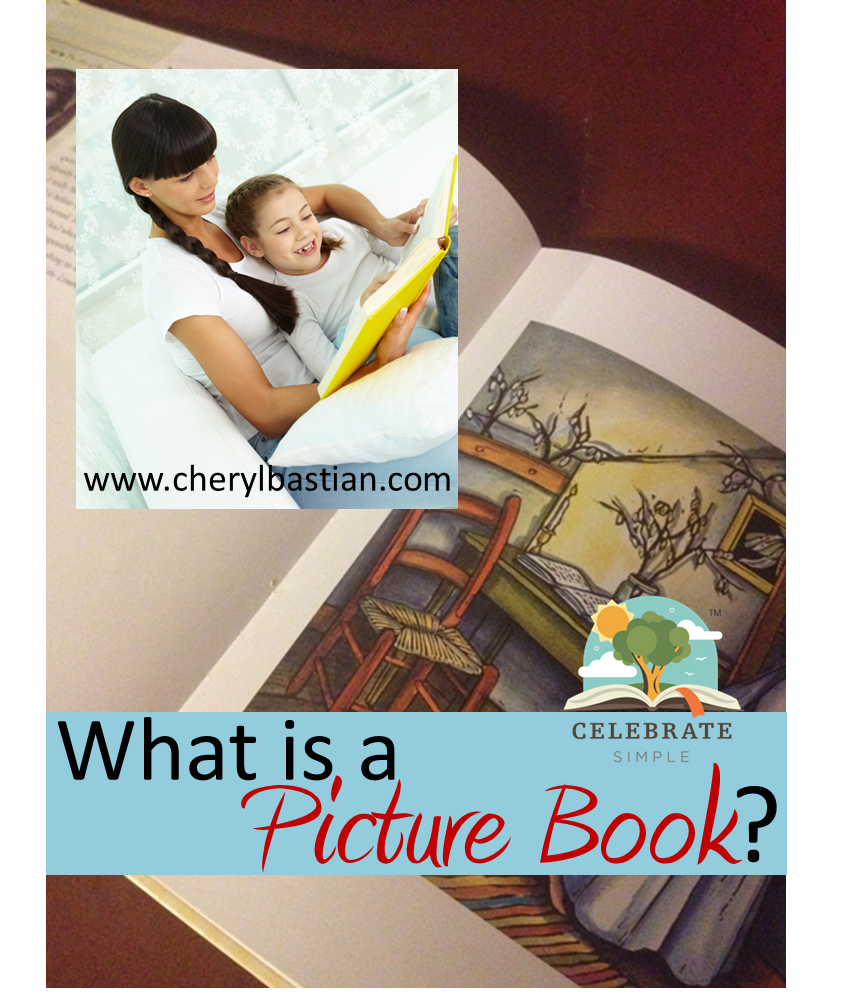What is a Picture Book?
/A picture book is a work which combines literary eloquence with artistic merit--words and illustrations--working together to tell a story. Generally, picture books are written with 200-800 words (depending on the age of the targeted audience) on 28-32 pages. Historically, picture books have been written to the preschool through mid-elementary audience, yet these masterfully crafted gems speak to the hearts of readers of all ages.
Wordless picture books. A wordless picture book is just that, a book without words. The illustrations alone tell the story, unless, of course, the person holding the book chooses to imagine and craft the text. One of the Bastian's favorite wordless picture books is Jerry Pinkney's extraordinary The Lion and the Mouse, a retelling of Aesop's classic tale. This treasure won the 2010 Caldecott Medal for its illustrative excellence.
If your younger readers enjoy visual storytelling or prefer to create their own storylines based on provided illustrations, these wordless picture books may add some spark to your morning read-aloud time.
Briggs, Raymond, The Snowman
Spier, Peter, Noah's Ark
Spier, Peter, Rain
Concept picture books. Little learners devour information, especially if content is presented with a twist of fun or catchy repetitive phrases and rhythmic rhyme. With this engaging, low-stress presentation, picture books can teach age-appropriate concepts (colors, numbers, opposites, and letters) to eager, curious littles.
Children ages 2-8 enjoy learning concepts through topics of interest, for example, cowboys, insects, or construction vehicles. Concept picture books make this possible and do so through relaxing moments with resources which foster both early learning and literacy.
Alakija, Polly, Counting Chickens
Carle, Eric, 10 Rubber Ducks
Demarest, Chris, The Cowboy ABC
Demarest, Chris, Firefighter A to Z
Emberley, Barbara, Drummer Hoff
Krull, Kathleen, M is for Music
Laroche, Giles, If You Lived Here: Houses of the World
McMillan, Bruce, Jelly Beans for Sale
Schnur, Steven, Spring: An Alphabet Acrostic
Wadsworth, Olive A., Over in the Meadow: A Counting Rhyme
Traditional picture books. I remember the librarian reading Blueberries for Sal as I sat imagining the smell of fresh muffins cooling in the kitchen. Through the unfolding plot of the the book, I could feel the fear Sal felt as she wandered off in the field and could no longer see her mom. Sal became my friend. I hoped she would find her mom, cheered her on as she met a mama bear. This is just one of the classics I associate with read-aloud time and school library visits. As a young mom, I couldn't wait to introduce my children to my literary pal, Sal.
Traditional picture books invite readers into the story, into the lives of the characters. While reading, listeners develop empathy and understanding of others' feelings and circumstances, almost without knowing the transformation is taking place. For this reason, picture books become a child's first experience with the power of story. Together as a family, we've jumped into the plots of Make Way for Ducklings by Robert McCloskey, Tops and Bottoms by Janet Stevens, and Caps for Sale by Esphyr Slobodkina.
Should you be a time and life season where you are building your home library, here are some must-have picture books to brighten up your shelves.
Ackerman, Karen, Song and Dance Man
Brett, Jan, Town Mouse and Country Mouse
Brown, Marcia, Stone Soup
Burton, Virginia Lee, Katy and the Big Snow
Burton, Virginia Lee, Mike Mulligan and His Steam Shovel
Burton, Virginia Lee, The Little House
Estes, Eleanor, The Hundred Dresses
Galdone, Paul, The Gingerbread Boy
Gramatky, Hardie, Little Toot
Hoban, Russell and Lillian, Bread and Jam for Frances
Keats, Ezra Jack, The Snowy Day
Keats, Ezra Jack, Whistle for Willie
Krauss, Ruth, The Carrot Seed
LaMarche, Jim, The Raft
McCloskey, Robert, Lentil
Newberry, Clare Turlay, Barkis
Swift, Hildegarde, The Little Red Lighthouse and the Great Gray Bridge
Ward, Helen, Unwitting Wisdom: An Anthology of Aesop’s Fables
Ward, Lynd, The Biggest Bear
Yolan, Jane, Owl Moon
Biographical picture books. Our older picture book readers (which includes mom!) enjoy reading about real people who solve real problems. With biographical picture books, young readers don't have to wait until they can read chapter books to read about and meet some of the world's most significant history changers. Our favorites have included
Dooling, Michael, Young Thomas Edison
Moses, Will, Mary and Her Little Lamb
Martin, Jacqueline Briggs, Snowflake Bentley
“Every child ought to know the pleasure of words so well chosen that they awaken sensibility, great emotions, and understanding of truth. ”
What is a picture book?
A picture book invites readers into learning and into the stories of others, gently, peacefully, and purposefully. There will be pondering. There will be wonder. There will heart-changing impact, sometimes so subtly it will go unnoticed for a bit of time.
Some of our most treasured family read-aloud moments and discussions have come from the pages we've turned together. With each book selected, read, placed on our shelves, and the read again, a legacy formed. That legacy is sweet, precious, unique to our family, as it will be yours. That story legacy is a gift, a gift which will continue to span generations. It is just one benefit of keeping learning real and relational.
Every. Moment. Matters.
I recently presented Picture Book Treasures at the 2018 FPEA Convention. If you would like more information on picture books and building a home library, the MP3 can be purchased in the FPEA store.







